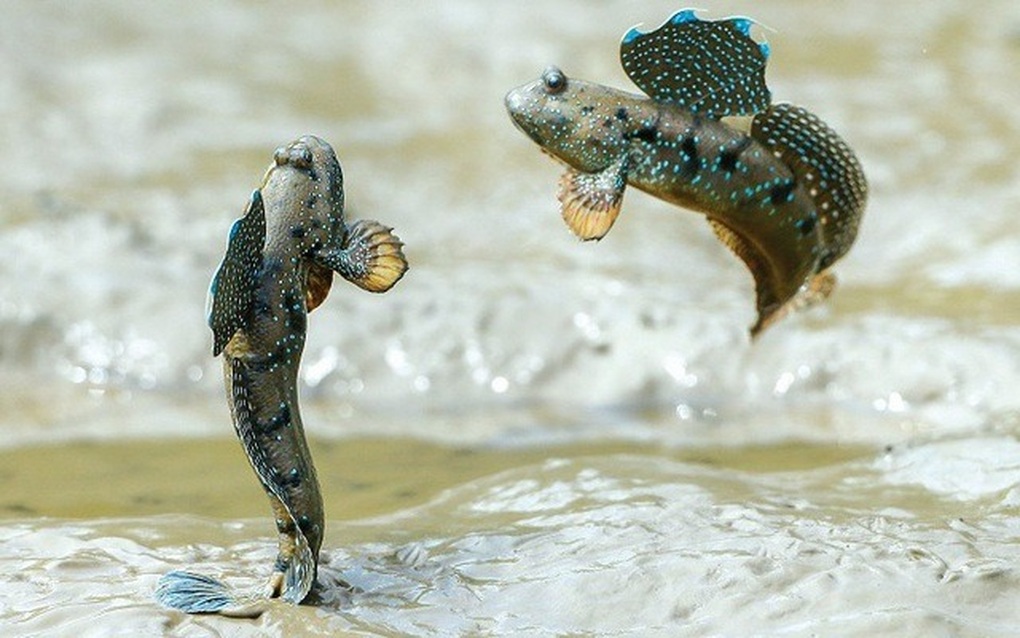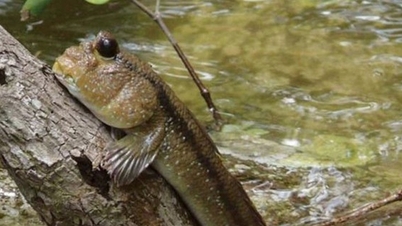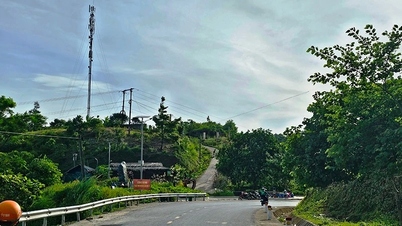The evolutionary journey from sea to land
In the history of evolution, the departure of organisms from aquatic environments to land has always been considered a fundamental turning point. This opened up the possibility of the formation of new, more diverse and complex life forms.
On the early Earth, all life began in the oceans. The planet was then almost completely covered by seawater. Changes in climate, geology, and nutrient availability over hundreds of millions of years prompted some groups of organisms to try to move into new spaces beyond the ocean.
Today we see many groups of organisms capable of living on land such as complete vertebrates, amphibians and fish that have the habit of walking on the shore.
Among them is a special group of fish that interests biologists because they carry a very clear set of evolutionary traces.
This group of fish once lived mainly in mudflats, estuaries and mangrove forests. Over millions of years, they gradually developed a unique set of characteristics that helped them survive outside the water for relatively long periods of time, from the way they move to breathing and balancing their bodies.
They are mudskippers, belonging to the subfamily Oxudercinae.

Mudskipper (Photo: Getty).
Biological features reveal new evolutionary directions
The most remarkable feature of mudskippers is their ability to stay out of the water for hours and still function normally.
They can crawl, jump or climb up wet mud patches to hunt insects, thanks to their front fins that have developed into structures strong enough to support their body weight and create momentum when moving on land.
At the same time, the fish's respiratory system has also changed in a more sophisticated way. The thin, vascular skin is always kept moist, allowing them to exchange gases directly with the environment.
The oral cavity and pharynx act as temporary humidifying chambers, and the gills are reinforced to prevent collapse when out of water, maintaining the minimum amount of humidity necessary for respiration.
When it is necessary to return to water, the fins retain the ability to swim. Overall, the locomotion of the mudskipper is somewhere between two forms. Partly it still has characteristics of coastal fish and partly it has moved closer to amphibians.
Thanks to the combination of these mechanisms, mudskippers can live far from the surf zone and extend their range deep into mangrove mudflats.
Biologists see this as clear evidence of convergent evolution, when a modern fish species develops features that look like an ancient ancestor of tetrapods, even though they have no direct evolutionary link.

This fish breathes on land using a combination of mechanisms, the most important of which are respiration through the skin, mouth and pharynx; their gills are also reinforced so they do not collapse when out of water (Photo: Getty).
Humans become the biggest obstacle in the evolutionary journey
Some experts estimate that the process of developing the features that help mudskippers adapt to semi-aquatic environments is thought to have spanned millions of years of their own evolutionary history.
This shows the persistence of evolution before creating a biological structure capable of operating effectively outside of water.
But the turning point that just created a survival advantage became a weakness when this creature encountered humans.
Mudskippers are a familiar ingredient in many rustic dishes in coastal areas of Vietnam. Their fragrant, slightly chewy, and nutritious meat greatly increases their commercial value.

Grilled mudskipper at a locality in Vietnam (Photo: Getty).
Looking back at the long evolutionary path of this fish, many biologists have made a bitter comment. That a modern fish can accumulate semi-aquatic characteristics over millions of years of adaptation is a rare achievement.
But that achievement became fragile when the appearance of humans created a pressure greater than any natural pressure. Not only mudskippers but many other species fell into the same situation. The expansion of human exploitation made the evolutionary advantages powerless.
From an ecological perspective, mudskippers are at a crossroads. Continuing to develop a semi-aquatic lifestyle is at great risk due to the increasing exploitation trend.
The natural environment of mudskippers is mainly mudflats and brackish coastal water, so they are unlikely to move to deep sea or offshore areas to avoid human impact.
Therefore, many experts see the mudskipper as a symbol of the evolutionary paradox in the modern context. Although it has undergone a long adaptation process in nature, it faces the risk of rapid decline since being impacted by humans.
Source: https://dantri.com.vn/khoa-hoc/loai-ca-mat-hang-trieu-nam-de-tien-hoa-len-can-lai-thanh-moi-nhau-20251125200023731.htm








































































































Comment (0)